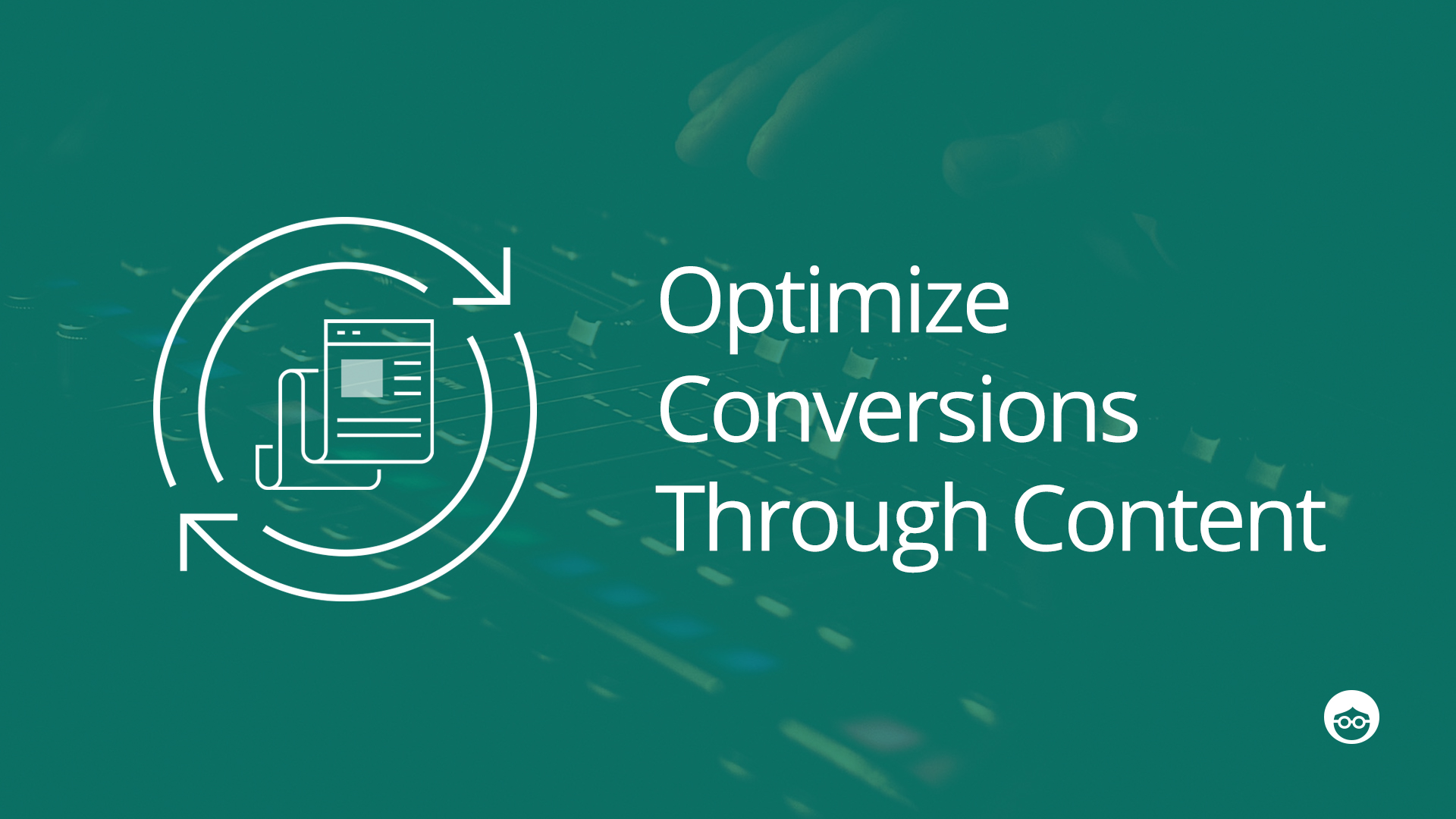5 Content Marketing Tips to Boost CRO

While content marketing and CRO are vastly different in concept and practice, their ultimate objective is more or less the same. What’s more, content marketing provides crucial support and momentum to conversion rates.
How? Content marketing plays a key role in producing value for the brand, helping to increase its credibility, authority, and SEO rankings. A good SEO ranking yields higher traffic inflow, which can directly affect the website’s conversion rates. More importantly, content also has a deep effect on sustaining the interest of incoming visitors along the marketing funnel, and provides an actionable path for them to convert.
In this post, we’ll share 5 useful content marketing tips to effectively boost your website’s conversion rates. Here is what your brand can reap by putting some effort into optimization:
- More profit: A 50% increase in conversion rate can increase profits by 500%.
- Reduced cost of customer acquisition: Optimize the number of visitors to your site and get the ones who actually convert to your business goals.
- Better UX: Improve your website’s user experience and get more followers, subscribers, and customers into the conversion pipeline.
- Reduced bounce rate: By lowering bounce rate, you can also improve your rankings in Google SERPs, getting more exposure, better coverage, and higher retention.
- Increased LTV: Optimizing your conversion rate can help boost your customer lifetime value across your entire funnel.
Let’s check our content marketing tips to boost CRO:
- Focusing on Your Conversion Funnel
- Declaring Your Content KPIs
- Creating Attractive Headlines
- Creating and Deploying CTAs
- Testimonials and Reviews
Focusing on Your Conversion Funnel
Content marketing has a direct impact on the customer conversion funnel as it helps create brand awareness, stimulates the user’s interest, prompts conversion decisions, and finally calls the user to action. While content plays most of its part in the first two stages, its function as a continuous facilitator remains throughout the funnel. By learning how the conversion funnel works, you can strategically deploy more effective content at specific stages to entice more user traffic. A higher number of visitors to your website means higher conversion potential. Here is what you can do to improve your conversion funnel through content marketing:
- Use an “above the fold” approach for your web copy to consolidate your brand’s sales pitch at the top of the page.
- Use content with high-performance value, such as infographics and video.
- Structure your content properly to eliminate confusion and ambiguity so the user can easily make the decision to convert.
- Add an emotional angle to your content. This will create a behavioral response that makes the conversion more likely.
Declaring Your Content KPIs
Determining your website’s key performance indicators (KPIs) is imperative for CRO. By building a list of goals, you can specialize your content for specific areas that need more effort,and monitor the progress you make with each milestone. Here is what a good list of content KPIs you should include to boost CRO:
- Retention rate on your on-page blogs and other content
- Number of forms submitted for your promotions (gated content)
- Average views of your blog posts and their bounce rate
- Number of subscribers to emails/newsletters
- Social media followers and shares achieved from posts
- Backlinks generated from guest posts and other off-page activities
- Engagement on your blogs – comments, shares, and likes
By calculating a measure of your content marketing progress, you can strengthen your efforts and even formulate new models to optimize conversions on your website.
Creating Attractive Headlines
A headline is a bold phrase or sentence that communicates the essence of your entire sales pitch. An attractive headline helps evoke the curiosity of your readers, orients them towards your marketing message, and addresses their eminent concerns. A properly constructed headline with the right style, keywords, and message will determine if your visitor will continue reading further or simply bounce from the page. Writing headlines takes the skill of an experienced content writer who knows how to speak to the target audience, and also optimizes them for search engines.
According to a research infographic by QuickSprout, a good headline formula looks like this:
Number or Trigger Word + Adjective + Keywords + Promise
You can try it out, but feel free to experiment and test the headlines that work for you.
The following statistics show why headlines have a direct effect on lead generation:
- 8 out of 10 internet users will only read your headline
- A good headline can vary traffic up to 500%
- Headlines with numbers can generate 73% more social shares and engagement
- Headlines are worth 90% of the advertising dollar
Here is what you can do to improve your headline performance:
Keep it Short: Headlines within eight-word range received a 21% higher click-through rate.
Add Colon: Adding a colon or hyphen in the title performed 9% better.
Use Odd Numbers: Headlines with odd numbers showed 20% higher click-through rate.
Check out more tips and tricks for great headlines and images.
Creating and Deploying CTAs
While some think Call to Actions (CTAs) fall under the web design and development category, they are actually an essential part of the content marketing model. CTAs are composed of a word, phrase or even a sentence designed to trigger an immediate response from the reader. CTAs are often matched with anchor text to redirect the user towards the desired conversion goal. CTAs are critical for lead generation, and they must constantly be tweaked and optimized to get better results. A well written CTA will directly impact your CRO. Here’s what you need to focus on when creating a CTA:
Simple and Clear: Leave no room for confusion by making your statement crystal clear. Use supporting content around the CTA button to explain the benefit of taking action.
Strategic Placement: Place your CTA where it is most likely to intrigue and excite the user. Position it “above the fold” of your web page, in a noticeable place.
Color Psychology: Different colors tend to elicit certain responses from users. Make sure your color is relevant to the context, and supports the behavior you want the user to take.
Here’s some more tips to help you create high performing CTAs.
Testimonials and Reviews
Customer testimonials and reviews are social proof that have immense conversion power. Using them wisely on your web pages can stimulate trust and confidence among your customers, and also strongly influence their decision to convert. Here are some statistics that show the full story:
- Testimonials have shown an effectiveness rating of 90% in influencing buying decisions.
- 93% of customers read reviews to determine if a brand is worth their time and money.
- Reviews can increase conversion rates by 270% just by displaying them on your website.
- A positive review will increase the chance of conversion by 58% when the user interacts with it.
Showing what your customers think about your brand will make your offering that much harder to resist, and will demonstrate how your business can give the customer what they are looking for. Moreover, they serve as an authentic answer to common questions about your brand, products, and services, conquering the user’s uncertainty and providing strong incentive to convert.
A Final Word
Conversion optimization is a complex process, but it’s actually based on simple principles. Every aspect of your marketing activities should be optimized for conversions – it’s your best chance at reaching your business goals. And that definitely includes your content marketing. Using the 5 hacks above, you can leverage your content marketing efforts to boost conversions – and boost your potential for success.












